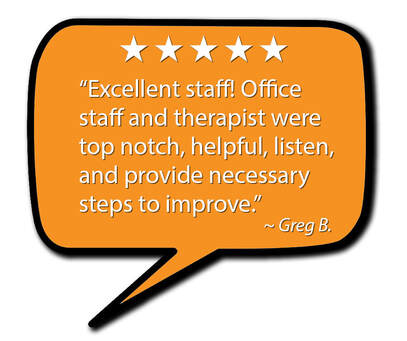|
“You have to wonder at times what you're doing out there. Over the years, I've given myself a thousand reasons to keep running, but it always comes back to where it started. It comes down to self-satisfaction and a sense of achievement.” - Steve Prefontaine I get asked frequently by clients to recommend the best shoe in order to avoid injury and promote efficient running. The following information is designed to help you make an informed decision based on research and foot biomechanics and is not intended to address specific orthopedic issues. Each foot contains 2,000 nerve endings, 34 muscles, 26 bones, 33 joints and 19 ligaments. Wouldn’t it be a shame if we limited this biomechanical marvel? Therefore, here are the options to consider when hunting for that comfortable shoe. Cushioning Cushion choice is primarily a personal preference. However, because of the current trend by manufacturers to return to chunky shoes we should be aware of the down side to excess padding and how it affects running efficiency. Studies show that an overly cushioned shoe can lead to increased impact forces. Type of Shoe Manufacturers offer many different types of shoes including stability or motion control shoes. These shoes try to limit movement in your feet which should immediately raise a flag. An arch is considered the strongest engineering structural shape. If you support an arch at its peak you weaken it. Your foot has three arches that carry your body weight plus gravity, absorb shock and assist forward propulsion through elastic recoil of the muscles that help create them. Studies show that the highest complaints of pain when running come from motion control and stability shoes and the greatest % of injuries are related to motion control shoes regardless of foot type. Arch height is not a good predictor of shoe type selection as High-arch and Low-arch runners do not differ in biomechanical response in motion control shoes. My recommendation is to stay away from shoes that claim to “do something” which leaves us with neutral shoes. Heel Lift Most manufacturers put the heel to toe differential under the technical specifications. Heel lift in shoes range from 0 to 22mm rise. A 22 mm rise is equal to a 15% incline from heel to foot. A 12 mm rise is equal to a 8% gradient. Ever cycle up a 8% gradient hill? It’s steep! Any rise over 7 mm changes the angle in our pelvis. Therefore, I recommend shoes with a 7 mm or less rise. Fit Our shoes should be light in weight to reduce waisted effort carrying our heavy feet. We need space for our feet to spread length wise during pronation or when our foot absorbs impact that is 1/2” beyond the longest toe. Our feet also get wider during pronation and so the shoe should allow this movement (those long foot bones have muscles between them that want to be used). In other words, your foot should not hang over the edges of the insole. Lastly, the heel should have a snug-fit. Orthotics Some of us benefit from orthotics when recovering from an injury or to help foot dysfunction. If we our using orthotics to recover from an injury they should be temporary with a goal of improving foot mobility and strength so that we no longer need them. Lacing When I see runners restrict foot movement by over tightening their shoe laces I cringe. Stop pulling those laces tight, a “snug fit” defeats the purpose or our 33-jointed appendage. Maybe if we just get out of the way our feet they can become the marvels that they are designed to be. Transition Transitioning from footwear that allows more foot function can take a while if your feet are not strong enough or used to the increased mobility. A good site for transition information in order to avoid over stress to your feet is correcttoes.com or contact us at ptplus.com References Butler RJ, Davis IS, Hamill J. Interaction of arch type and footwear on running mechanics. Am J Sport Med. 2006;34:1998-2005 Miller AF et al. Mechanical measures, shoes, taping orthotics. Am J Sports Med 2011 Energetics and optimization of human walking and running: The 2000 Raymond Pearl memorial lecture McNeill & Alexander. Am. J. Hum. Biol. 14:641–648, 2002. Ryan MB, Valiant GA, McDonald K, Traunton JE. The effects of three different levels of footwear stability on pain outcomes in women runners: a randomized control trial. Br J Sports Med. 2010 Jun 27 Willy, R. W., & Paquette, M. R. (2019). The physiology and biomechanics of the master runner. Sports Medicine and Arthroscopy Review. https://doi.org/10.1097/JSA.0000000000000212 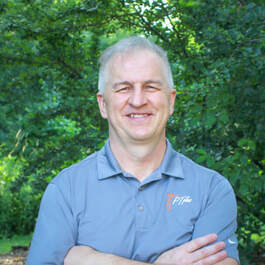 These PT Pro Tips are brought to you by our Brookfield/Third Ward Therapist, Ed Shuster OT, MS. In addition to treating musculoskeletal and chronic pain issues he also offers the following specialty services:
1 Comment
Welcome to the August 2022 issue of In Focus with PT Plus Physical Therapy  What's New at PT Plus Welcome Brianne! Welcome Brianne Jeras to the PT Plus clinical team! Brianne comes to PT Plus with 17 years of experience and is excited to begin practicing in our Greenfield clinic. Some fun facts about Brianne:
PT Plus Company Picnic This Friday, August 12th, the PT Plus Team will be getting together for a company picnic, so all clinics will be closed by 3:00pm. Our central phones will be turned off for the weekend by 3:00pm as well. If you need to reach us, please leave a message and we will return your call on Monday, or you can email us directly at connect@ptplus.com. 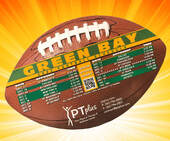 August Giveaways Stop in any of our PT Plus clinics to get your Green Bay Packers schedule magnet (while supplies last)! Shop the PT Plus Store The PT Plus Fall 2022 store is now open! Get some swag to match your favorite PT Plus staff. Store closes Friday, Augusts 12th so shop now to get your gear! bit.ly/PTplusStore2022 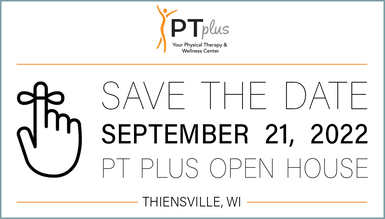 Mark Your Calendars PT Plus is hosting an open house on Wednesday, September 21st at our Thiensville Clinic. Stay tuned for more details to be released! Leave us a Review Support a locally owned small business by referring your family and friends. We care about all of our patients and rely on the word-of-mouth marketing that you provide. If you have a testimonial about PT Plus to share, we would love to hear from you! Leave a Google Review: Bay View – Brookfield – Elm Grove – Greenfield – Thiensville Third Ward – Racine – Slinger – West Bend Leave a Yelp Review: Bay View – Brookfield – Elm Grove – Greenfield – Thiensville Third Ward – Racine – Slinger – West Bend Featured Testimonial 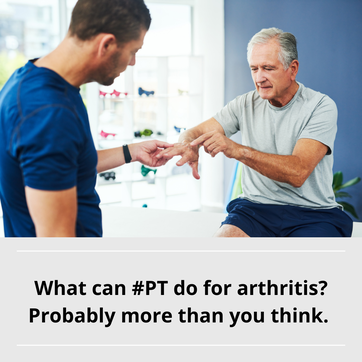 What Physical Therapy Can Do For Arthritis Arthritis is a chronic condition that causes inflammation of the joints. It can cause pain, stiffness, and swelling. The hips, knees, hands, and spine are the most commonly affected joints. Arthritis is not a single disease but an umbrella term that includes a variety of different types. Some of the more common examples are osteoarthritis, rheumatoid arthritis, gout, psoriatic arthritis and ankylosing spondylitis. While physical therapy might not be the first treatment you think of for arthritis, it probably should be. A lot of people with arthritis choose to use medication to manage their pain, stop activities that hurt, and wait for things to get bad enough to have a joint replacement. But this isn't a great plan - all medications have side effects, even over the counter ones. Reducing activity leads to muscle atrophy and even stiffer joints. Even though joint replacement surgery usually has good outcomes, it does come with its own set of risks and a painful recovery. Physical therapy has been extensively researched as a treatment for arthritis, and demonstrates good outcomes. Physical therapists typically start with exercise as the base for arthritis treatment. Exercise helps to regain lost joint motion, decrease feelings of stiffness, and strengthen muscles surrounding the affected joint. These benefits are all somewhat obvious. What surprises many people is that exercise has been shown to be as effective as medication for pain relief in many types of arthritis, without the side effects. Physical therapy has more to offer people with arthritis than just exercise though. Education helps people understand their condition, what to expect, and how to manage it. As experts in human movement, physical therapists are especially good at helping people modify the way they perform certain tasks or activities to reduce strain on joints affected by arthritis. They can also suggest ways to modify the environment at work or home to reduce pain and improve function. They may also suggest things like braces, orthotics, or other devices that can help maintain mobility and reduce pain. On top of all of that, PT has been proven to be a cost effective treatment, too. With so many techniques that are proven effective in helping people with arthritis, physical therapy is a recommended first line treatment for many types of arthritis. Now that you have a better understanding of what PT can do, hopefully you'll think of PT first when you think of arthritis too. References:
|
Archives
March 2024
Categories |
|
Central phone: 262-796-2850
Central fax: 262-796-2851 Central email: patientcare@ptplus.com Website by RyTech, LLC
|
|

